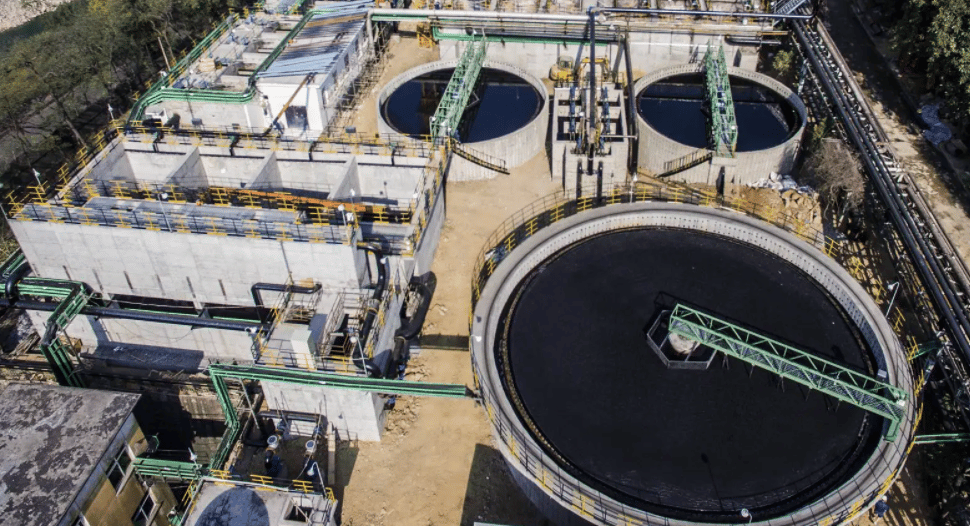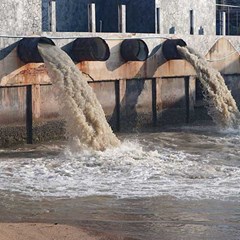Industrial Waste Water Treatment-- Eco-Friendly Solutions for Water Recycling
Industrial Waste Water Treatment-- Eco-Friendly Solutions for Water Recycling
Blog Article
Obstacles and Solutions in Industrial Waste Water Therapy
The therapy of industrial wastewater presents a diverse selection of obstacles, ranging from strict regulative conformity to the intricacies of cost administration and technical constraints. The irregularity in waste composition further complicates the efficiency of conventional therapy approaches, often leading to intensified operational expenses. Emerging services such as advanced oxidation processes and innovative financing versions reveal assurance in resolving these problems. As markets come to grips with the requirement for sustainable practices, the question continues to be: what approaches will inevitably cause an equilibrium between compliance, cost-efficiency, and environmental duty?
Regulatory Compliance Obstacles
Exactly how can industrial centers navigate the facility landscape of regulative conformity in wastewater treatment? The regulatory structure governing wastewater monitoring is multifaceted, often differing by jurisdiction and sort of industry. Facilities needs to abide by federal, state, and neighborhood policies that determine effluent quality criteria, discharge limitations, and tracking requirements. Failing to abide can lead to extreme penalties, consisting of fines and operational closures.
To successfully manage these compliance difficulties, centers should carry out durable monitoring and reporting systems that guarantee real-time information collection and evaluation. Regular audits and risk evaluations can recognize possible compliance spaces, enabling aggressive adjustments in treatment processes. Worker training programs concentrating on governing expertise and ideal practices are important to cultivate a society of conformity within the company.
In addition, engaging with governing agencies can supply valuable understandings and make clear uncertain laws. Facilities may likewise take advantage of consulting with ecological experts that concentrate on wastewater treatment conformity, making certain that they stay informed of advancing policies. By embracing these approaches, industrial facilities can not only fulfill conformity requirements but likewise boost their functional efficiency and environmental stewardship.
Expense and Financial Obstacles
Browsing regulatory compliance in wastewater treatment commonly offers significant financial difficulties for commercial centers. The prices related to implementing required treatment innovations, preserving conformity with rigid laws, and taking care of functional expenditures can be daunting. Numerous organizations face high initial funding expenditures for the building or updating of wastewater therapy plants, which might stress budget plans, particularly for medium-sized and little business.
Additionally, continuous operational costs, including labor, maintenance, and chemical inputs, add to the economic worry. The changability of changing power rates and the prospective requirement for additional financial investments to satisfy progressing policies aggravate these economic stress. In several instances, the lack of financial motivations or assistance from government bodies makes it much more difficult for services to justify financial investments in sophisticated treatment systems.
In addition, the financial stability of wastewater therapy services is frequently examined, especially for industries with limited revenue margins. It is important for industrial centers to discover affordable strategies, such as embracing cutting-edge financing choices, involving in partnerships, and leveraging arising modern technologies that can assist minimize these economic barriers while making sure compliance with environmental criteria.

Technical Limitations
Countless technological constraints impede the performance of industrial wastewater therapy processes. One considerable challenge is the insufficiency of existing treatment innovations to address complicated impurities.
Furthermore, the scalability of therapy technologies postures a challenge. While some sophisticated techniques, like membrane layer about his filtering or sophisticated oxidation, show promise in regulated environments, their application on a bigger scale can be technically tough and prohibitively expensive. Upkeep and functional intricacies further complicate the fostering of these systems, specifically for smaller industries with restricted technological knowledge.
The assimilation of real-time surveillance technologies also stays inadequate in several therapy facilities. Without effective monitoring systems, operators can not effectively analyze therapy efficiency or spot prospective failings, bring about irregular effluent top quality. Resolving these technical restrictions with research study and development, alongside investment in cutting-edge remedies, is critical for boosting the effectiveness of industrial wastewater treatment and making certain governing conformity.
Variability in Waste Composition
In the world of commercial wastewater treatment, the variability in waste make-up provides a powerful challenge. Industries create wastewater with varied qualities, influenced by variables such as manufacturing processes, resources, and functional methods. This heterogeneity makes complex the treatment procedure, as traditional systems frequently struggle to properly attend to the wide array of contaminants existing.
For instance, wastewater from food handling may contain high degrees of organic matter, while effluents from chemical production might consist of heavy steels and dangerous materials. This variance demands adaptable therapy methods to make certain compliance with ecological regulations and secure public health. Furthermore, variations in waste structure can take place gradually, affected by changes in production routines, maintenance activities, or the intro of new items.

Innovative Treatment Solutions
Cutting-edge treatment remedies are important for resolving the complexities of commercial wastewater monitoring. Standard approaches typically drop short in successfully eliminating a large range of pollutants, specifically in facilities with diverse effluent streams. Current innovations concentrate on integrating sophisticated technologies to improve therapy performance and sustainability.
One promising method is using innovative oxidation processes (AOPs), which leverage powerful oxidants to break down natural pollutants. AOPs, including photocatalysis and ozonation, can substantially lower toxic substances and enhance effluent high quality. Furthermore, membrane layer bioreactor (MBR) modern technology has actually gained grip, integrating organic therapy with membrane layer filtering, leading to high-grade effluent and reduced footprint.
Another innovative navigate to this website solution is the implementation of resource recovery systems. Techniques like anaerobic digestion not just deal with wastewater yet his response additionally generate biogas, which can be used as a renewable resource resource. Moreover, the fostering of expert system and machine knowing models can optimize therapy procedures by forecasting variants in wastewater make-up, therefore boosting functional effectiveness.
These innovative solutions not just address regulatory conformity however also advertise ecological sustainability, paving the means for an extra durable and efficient commercial ecological community.
Final Thought
In conclusion, resolving the difficulties of commercial wastewater treatment calls for a diverse approach that incorporates regulatory compliance, price administration, and technical improvements. Cutting-edge services, such as innovative oxidation processes and membrane layer bioreactor technology, deal paths to improve therapy efficiency. Moreover, real-time monitoring systems and collective involvement with regulatory companies can advertise sustainable methods while minimizing economic pressures. A dedication to continual improvement in treatment methods will inevitably contribute to the effective administration of commercial wastewater and ecological protection.
The therapy of commercial wastewater offers a complex array of challenges, ranging from stringent regulatory conformity to the ins and outs of expense administration and technical restrictions. Industrial Waste Water Treatment.Navigating regulatory compliance in wastewater therapy usually offers substantial monetary difficulties for industrial facilities. Resolving these technical restrictions with research and development, along with financial investment in ingenious services, is essential for enhancing the efficiency of commercial wastewater therapy and guaranteeing governing conformity
Wastewater treatment centers should invest in durable surveillance systems and versatile treatment modern technologies capable of fitting varying influent qualities.In conclusion, attending to the difficulties of commercial wastewater treatment needs a complex method that incorporates governing compliance, expense monitoring, and technical improvements.
Report this page